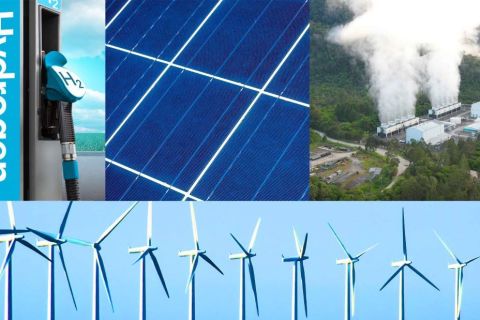A growing infrastructure of NGL pipelines is being developed in the Rockies and adjacent regions to handle rising resource play volumes, especially from the Bakken and Wattenberg, attendees at Hart Energy’s Rockies Midstream conference learned. 28 January 2013 MidstreamBusiness.com
Three NGL pipeline projects are under way in the Bakken, where there has been scant NGL pipeline takeaway historically, even as rapidly growing oil-focused drilling has resulted in rising volumes of rich Bakken gas that includes a higher ethane component, said Bob Clarke, Bear Tracker Energy chief executive.
NGL pipelines due to come online this year include: ONEOK’s Bakken NGL pipeline, with a capacity of up to 135,000 barrels (bbl.) per day of unfractionated NGLS sourced mainly from ONEOK’s processing plants; and Vantage Pipeline Canada’s ethane pipeline, with an initial capacity of 45,000 bbl. per day, expandable to 60,000 bbl. per day, supplied by Hess Corp.’s Tioga plant.
The more-than-500-mile ONEOK line will run south from the Williston basin to the Overland Pass Pipeline and then east to Conway, Kansas. The 435-mile Vantage line will run northwest to the Canadian border, through Saskatchewan into Alberta and connect with the Alberta Ethane Gathering System near Empress, Alberta.
Also scheduled to come on line in 2013 is Alliance Pipeline’s Tioga Lateral, providing a third outlet for rich gas (entire NGLs removed). With an initial capacity of 106 MMcf per day, the lateral will run northeast from Tioga, North Dakota, to the Alliance mainline near Sherwood, North Dakota, for onward shipment to the Chicago market and processing by Aux Sable Liquid Products.
Pending the startup of these projects in 2013, a similar lateral to the Alliance mainline, called Prairie Rose, has offered the only external route for producers to capture the value of ethane in production in the Williston basin, said Clark. To a large extent, producers have had to rely on trucking fractionated products to local markets (e.g. propane for home heat, butanes to refineries).
Bakken gas production of almost 800 MMcf per day in September 2012 compares to Williston basin gas processing capacity of 900 MMcf per day, with one-third of produced gas being flared, Clark noted. About a half-dozen projects were expected to expand processing capacity by roughly 560 MMcf per day through 2014, but Clark said he wouldn’t be surprised if others projects were added to the drawing board and also came on line by the end of 2014.
Based on last September’s 800 MMcf per day gas production, full NGL recovery would equate to 190,000 bbl. per day. However, under a forecast that natural gas production will rise to 3.1 Bcf per day in 2025, full recovery would then reach 740,000 bbl. per day, according to a Bentek study for the North Dakota Industrial Commission base case.
Bill Bradley, senior director, Enterprise Products, provided updates on three NGL pipeline projects serving Rocky Mountain producers focused on delivering product to the Gulf Coast.
Regarding the Front Range NGL pipeline, Bradley indicated a possible open season may be held in the first quarter of 2013 on expanding the project further north in the Rockies.
“We are seeing significant interest from producers in the Power River, as well as the Bakken, which are inquiring into the potential to expand the Front Range pipeline all the way up into the Bakken,” he said. “I would expect that you would see something in the first quarter announcing a potential open season for capacity on that pipeline.”
As currently configured, the Front Range pipeline is expected to be in service in the fourth quarter of 2013 with an initial capacity of 150,000 bbl. per day, expandable to 230,000 bbl. per day. It is a joint venture between Enterprise, DCP Midstream Partners and Anadarko Petroleum.
Don Baldridge, senior vice president, DCP Midstream Partners, looks forward to the benefits for Rocky Mountain producers resulting from the startup of the Front Range pipeline.
“This will be the first time that we have got the DJ (Denver Julesburg) basin directly tied to the Mont Belvieu market,” he said.
The Texas Express NGL pipeline is expected to be in service in the second quarter of 2013, with an initial capacity of 250,000 bbl. per day, expandable to 400,000 bbl. per day.
The MAPL Rocky Mountain NGL pipeline expansion, serving producers in Utah and Wyoming, is due to be in service in the first quarter of 2014 with an expanded capacity of 340,000 bbl. per day, up from 275,000 bbl. per day currently.
Recommended Reading
Energy Transition in Motion (Week of Nov. 1, 2024)
2024-11-01 - Here is a look at some of this week’s renewable energy news, including progress on the largest U.S. offshore wind project being developed.
Energy Transition in Motion (Week of Sept. 27, 2024)
2024-09-27 - Here is a look at some of this week’s renewable energy news, including a commitment of more than $116 billion annually in renewables and grids.
Energy Transition in Motion (Week of Oct. 4, 2024)
2024-10-04 - Here is a look at some of this week’s renewable energy news, including the startup of a solar module manufacturing facility with an annual 2-gigawatt capacity.
Energy Transition in Motion (Week of Sept. 6, 2024)
2024-09-06 - Here is a look at some of this week’s renewable energy news, including $7.3 billion in clean energy funding for rural Americans.
Energy Transition in Motion (Week of Aug. 23, 2024)
2024-08-23 - Here is a look at some of this week’s renewable energy news, including a promising outlook for global offshore wind capacity.
Comments
Add new comment
This conversation is moderated according to Hart Energy community rules. Please read the rules before joining the discussion. If you’re experiencing any technical problems, please contact our customer care team.


